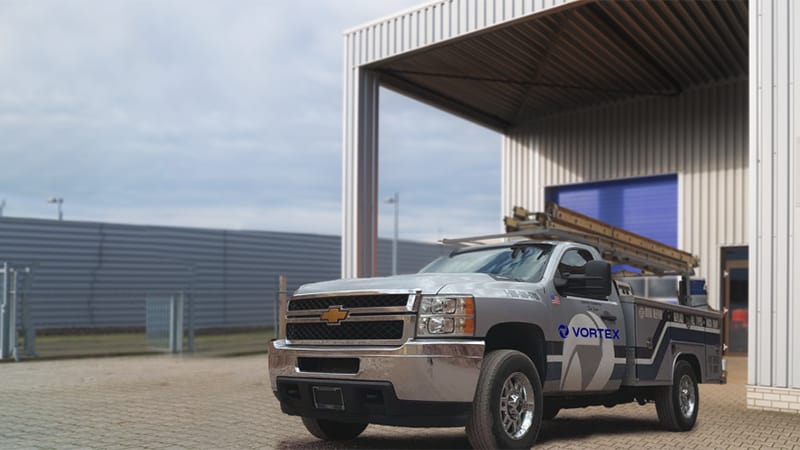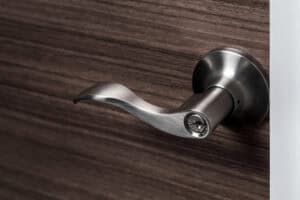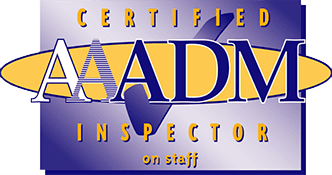What is the Correct Door Width for a Wheelchair?
 According to the Americans with Disabilities Act (ADA), every property owner must ensure their building is wheelchair accessible. ADA accessibility standards don’t mandate a single door width for wheelchair users, but a range. Standard door openings are 25-36 inches wide, while wheelchairs are 21-40 inches wide. It’s up to property owners to evaluate the routes into their buildings and make sure they’re large enough to accommodate all visitors and staff.
According to the Americans with Disabilities Act (ADA), every property owner must ensure their building is wheelchair accessible. ADA accessibility standards don’t mandate a single door width for wheelchair users, but a range. Standard door openings are 25-36 inches wide, while wheelchairs are 21-40 inches wide. It’s up to property owners to evaluate the routes into their buildings and make sure they’re large enough to accommodate all visitors and staff.
Standard Wheelchair Sizes
There are several types of wheelchairs, built to accommodate disabled people of varying sizes and abilities. The most common are:
- Manual Wheelchairs. Powered by the user, manual chairs have an average seat width of around 20 inches, but are generally 25 inches wheel to wheel. When installing a new door, remember to make it large enough that the user doesn’t bang their arms against the door frame.
- Lightweight Wheelchairs. A subset of manual wheelchairs, made from aluminum or titanium for easier handling and maneuverability. The smallest is 23 inches wide, while the largest is 36 inches.
- Transport Wheelchairs. Designed for people with limited mobility, who don’t normally need assistance. The rear wheels of these chairs can’t be reached while sitting in them, so they have to be pushed by an attendant or caregiver. Between 19 and 32 inches wide, these chairs are a common feature at airports and healthcare facilities.
- Power Wheelchairs. Electrically powered and controlled by a joystick, these chairs are built for people without the strength necessary for a manual chair. Due to their extra hardware, power chairs are typically 30-34 inches wide.
- Bariatric Wheelchairs. Come with reinforced frames, wider seats, and higher weight capacities, for people too heavy for a standard wheelchair. Most bariatric wheelchairs are 22-28 inches wide, but some are big as 40 inches wheel to wheel.
- Scooters. Faster, portable, and better suited to rough terrain, mobility scooters are generally used by people who can walk, but suffer from a condition that impairs their mobility, such as arthritis or muscular dystrophy. The smallest scooter is around 20 inches wide, while the largest is around 30 inches.
Best Door Sizes for Wheelchairs
According to ADA standards, the minimum width for a commercial door is 32 inches. This provides sufficient turning space for the average wheelchair to maneuver without snagging its wheels, handles, or user. However, 48-inch doors, the maximum recommended size, are more popular at public buildings such as shopping malls, hospitals, stadiums, movie theaters, and convention centers, since they allow businesses to accommodate a larger number of people.
Besides wider entryways, property owners might want to consider other features as well. To enhance accessibility, ADA recommends:
- Signs marking wheelchair entrances, so people know which doors are designed for them
- Sliding doors, for wide, unobstructed openings
- Automatic doors, to make it easy for people with limited strength to access your building
- Offset hinges, which add an extra inch of clearance by letting doors open further than normal
Keep in mind that ADA regulations don’t require you to upgrade every existing door in your building. Only sixty percent of entrances need to be large enough to accommodate wheelchair users.
In order for a door to be considered wheelchair accessible, it must not only be wide enough for a wheelchair to pass through; its locks, doorknobs, and lever handles can’t be more than 48 inches above the floor.
In addition, if its threshold is higher than half an inch, it requires a ramp. What’s more, every major entryway needs a clear, accessible path of travel from the arrival point into your building. This means that if your building has stairs leading to its front entrance, it needs a ramp installed alongside them.
ADA Door Inspections
Vortex service teams understand ADA requirements. Besides checking for worn and damaged parts, our technicians identify doorways and entrances that aren’t up to code. In doing so, we not only ensure your building is accessible, but also help you avoid regulatory fines. Property owners can pay up to $75,000 for violating ADA guidelines, with additional infractions costing as much as $150,000. Make sure your doors are on the level. Contact Vortex and schedule your inspection today!










